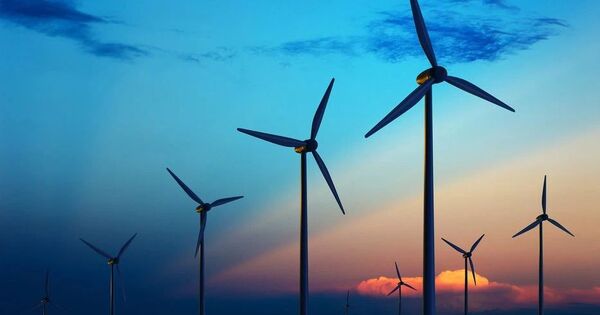When compared to thermal power facilities, a wind farm that has been spinning for less than two years can balance the carbon emissions generated over its 30-year lifespan. That’s according to a new peer-reviewed study published in the Journal of the Royal Society of New Zealand, which also indicates that within six months, a turbine can create all of the energy it consumes over its lifetime.
The study used data from the Harapaki onshore wind farm in Hawke’s Bay, New Zealand; nevertheless, the authors of the publication state that their findings would be repeated across most, if not all, wind farms worldwide.
“The wind turbine technology employed in New Zealand is consistent with that used internationally,” explains lead author Isabella Pimentel Pincelli from the Sustainable Energy Systems research group, Wellington Faculty of Engineering, at Te Herenga Waka Victoria University of Wellington.
Our findings highlight the environmental benefits of onshore wind farms and their critical role in the energy transition. Notably, wind turbine manufacturing is the largest contributor to carbon and energy footprints, emphasizing the importance of focused environmental mitigation techniques.
Isabella Pimentel Pincelli
“Although the carbon offset is dependent on the specific older technology that the wind turbines are replacing, we would expect a comparable offset globally. Gas turbines are used in New Zealand, although many other countries will phase out fossil fuel generators. Our findings highlight the environmental benefits of onshore wind farms and their critical role in the energy transition. Notably, wind turbine manufacturing is the largest contributor to carbon and energy footprints, emphasizing the importance of focused environmental mitigation techniques.”
The study reviewed current literature on wind farms, as well as using real construction data to take into account everything from the manufacturing of individual turbine parts, to transporting them into place, to decommissioning the entire wind farm at Harapaki — which comprises 41 turbines.
The results indicate that this particular farm will leave a carbon footprint of 10.8 gCO2eq/kWh, which equates to a greenhouse gas payback time of 1.5-1.7 years for avoided combined cycle gas turbines, and an energy payback time of 0.4-0.5 years.

Co-author Professor Alan Brent, Chair in Sustainable Energy Systems at Wellington, explains while the results underscore how onshore wind plants are aligned with the principles of sustainable development, more can still be explored with making the manufacturing process more eco-friendly.
“The environmental effects of the installation and transport stages are significant. Brent, a Professor of Sustainable Energy Systems, reports that they together accounted for approximately 10% of total emissions.
“It is therefore critical to continue making innovations targeted at avoiding negative environmental consequences while maximising beneficial contributions throughout the supply chain of onshore wind farms. Notably, wind turbine manufacturing is the largest contributor to carbon and energy footprints, indicating a critical area for targeted environmental mitigation methods.”
To address the carbon outlay of the process of developing such wind farms, the expert team recommend developing a recycling process for end-of-life blades. Currently blades are disposed of in landfill due to commercial feasibility, but by recycling the blades — either mechanically or chemically — could drop the emissions from the current 10.8 gCO2eq to a potential 9.7.
Furthermore, the team recommends that research in this field be conducted on a frequent basis, as “rapid advancements in technologies” will make it “necessary to ensure research remains reflective of current practices to accurately inform decision-making processes.”
This study has a few methodological shortcomings. First, it focuses solely on the wind farm’s energy intensity and emissions throughout its life cycle, ignoring additional environmental effects such as ozone depletion, human toxicity, acidification, eutrophication, and resource depletion. Social, wildlife, and economic implications were also overlooked.
















